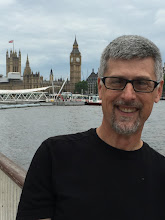About Me
Followers
Powered by Blogger.
Tuesday, September 9, 2014
Church in the City
Retired pastor and writer Eugene H. Peterson reports that
when he first went he was sent by the Presbyterian church to plant a
congregation in Maryland outside of Baltimore he discovered nothing but corn
fields. Those corn fields became houses and streets and stored and schools
called suburbia. Inevitably some of the people who moved into those houses went
looking for a church, and Peterson’s church grew and became a living faith
community.
There is nothing particularly remarkable about this story
with the exception of the event of suburbia itself. The post war era was a time
of building: roads, cars, sewer systems, towns, utility wiring and pipes. The
last half of the 20th century brought a taxpayer subsidized
lifestyle revolution, requiring an unprecedented amount of wiring and piping
and pavement per capita.
Churches adapted. New churches were planted for these new
suburban communities, and others followed their parishioners out of established
urban neighborhoods, abandoning old church buildings to newcomers. The suburban
megachurch model was born as well.
For many years tropes like affluent suburbs and impoverished
inner city had traction and contained some truth. The events in Ferguson,
Missouri, this summer reveal that suburbs are quite a complex social reality in
and of themselves. And some of the wealthiest, expensive and most sought after
zip codes are in what we once would have called inner city.
The geography of our lives, and of the church, is changing.
No longer can we look for the next corn field to be turned into a suburban town
and plant a church there waiting for people to come. We can no longer afford
the taxpayer subsidized infrastructure demanded by suburban development. And
the people who might live in those houses can’t afford to heat, cool, and care
for that much space. Furthermore, the generation coming into their own today,
the 80 million strong millennials, prefers walking, biking and public
transportation to cars, has fewer children, and would rather live in smaller housing
units than sprawling suburban McMansions with big yards. In short, they prefer
the city and the lifestyle of spending time, not at home, but in cafes, bars,
restaurants, parks, theaters and concert venues. And perhaps churches.
Whether you find this development hopeful or not, it does
have precedent in the church, even in the early church. Christianity was an
urban movement in its earliest days. In the ancient cities of the Roman empire
people lived in tight quarters, with the exception of the very few wealthy, and
spent most of their time in the marketplace and other settings where they
rubbed shoulders with other people. Public space was critical to the growth of
the early church. This social activity, not the building of new subdivisions,
was the infrastructure through which the Holy Spirit worked to grow the church.
Today the most exciting new church developments (which are
more likely to be new campuses of existing churches) are in cities and are
driven by urban social energy. Many such churches are adept at using social
media and technology for bringing people together or telling their story but
the energy is tied to an urban sense of place.
Subscribe to:
Posts (Atom)
